AYAT - AYAT PALSU KITAB YOHANNES
KITA MULAI PEMBAHASAN DENGAN AYAT YANG
MENJADI DASAR IMAN KRISTEN YAKNI DARI CODEX VATICANUS, DALAM CODEC INI
YOHANNES 1:1-41 TIDAK PERNAH ADA
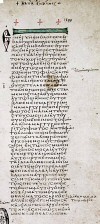
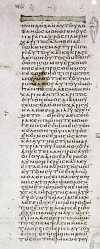
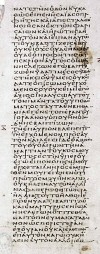
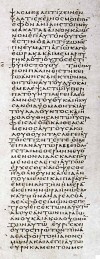
Gambar codex vaticanus, ternyata tidak ayat Yohannes 1:1-41
Biar Yohannes 1: 1-41 lebih jelas bisa di lihat lagi pada screen capture berikut:
NOTES:
Berdasarkan penelitian sarjana Alkitab dianataranya Burton L mark di dalam bukunya"Who wrote the New Testament" dan Saint Agustin di dalam bukunya "The Confession Of st.Agustin" mengaku bahwa yohannes 1:1-18 bukanlah bagian daripada Injil yohannes,itu adalah filsafat platonis yang kemudian dimasukkan ke dalam injil Yohannes, ayat-ayat yohannes ini sangat beralasan bila di cap palsu, karena kitab tertuapun seperti Matius, Markus dan Lukas tidak sedikitpun menulis doktrin Firman Jadi manusia, lalu doktrin ini muncul dalam Yohanes sebagai kitab termuda kan aneh?? coba kita amati
=================================================================================================================
Codex Vaticanus
YOHANNES 7:40b–8:19 (TIDAK ADA the Pericope Adulterae/TENTANG KISAH PEREMPUAN BERZINA)
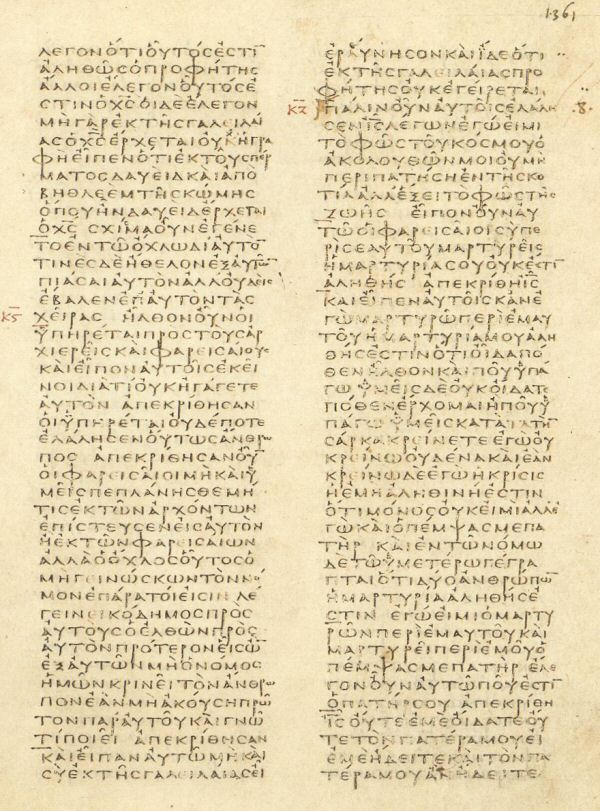
DAN INI SESUAI DENGAN PAPYRUS 66, BISA DI LIHAT DISINI: http://williamstev.blogspot.com/2014/12/papyrus-66-dalam-kitab-yohannes.html
==================================================================================================================
YOHANNES 1:18
Tahukah anda bahwa pada CODEX VATICANUS, yohannes 1:18 berbunyi μονογενὴς θεός, [ Tuhan yang dilahirkan], namun pada manuskrip yang baru oleh pengarang bible di ubah menjadi [μονογενὴς υἱός = Anak yang di lahirkan]
SEKARANG KITA BAHAS 1YOHANES 5:7-8 (COMMA JOHANNEUM)
Kepalsuan 1 Yohannes 5:7-8, dimana di sana dimasukan kata tambahan Bapa, Firman dan Roh Kudus, ini di tambahkan jelas untuk mendukung doktrin trinitas alias tritunggal, padahal ayat yang mula-mula tidak ada kata tersebut
PERHATIKAN AYAT INSERSI ( SISIPAN) YANG SAY BERI TANDA KURUNG, BUNYI AYAT INILAH YANG SEKARANG BEREDAR DI SELURUH DUNIA
1YOHANES 7-8
{7} Sebab ada tiga yang memberi kesaksian (DI DALAM SORGA: BAPA, FIRMAN dan ROH KUDUS; dan ketiganya adalah satu.
{8} (Dan ada tiga yang memberi kesaksian di bumi): Roh dan air dan darah dan ketiganya adalah satu.
AYAT AWAL MULA SEBELUM INSERSI
1YOHANES 7-8
{8} Roh dan air dan darah dan ketiganya adalah satu.
Satu-satunya ayat Trinitas yang melantik Yesus sebagai salah satu dari
oknum Tuhan ini adalah sisipan/insersi. Ayat ini diciptakan oleh
Priscillian, seorang bidat asal Spanyol yang mati tahun 385. Mulanya
ayat ini dicantumkan dalam komentar atau catatan pada margin Alkitab.
Lima belas abad kemudian ayat ‘margin’ ini diterima karena dianggap
memberikan bukti Alkitabiah untuk ajaran Trinitas.
Di dalam Naskah Tischendorf dan Wesscott Hort yang berasal dari abad 3 dan 4 M pun tidak ayat insersi tersebut:

Maka pada
dalam terbitan Perjanjian Baru Yunani tahun 1550 yang dilakukan oleh
Stephanus, catatan/footnote itu dimasukkan ke dalam Authorized Version,
dan menyelinap dalam Bibel di seluruh dunia.
Namun beberapa edisi
Bibel masih objektif dengan mencantumkan ayat palsu tersebut dalam
Bibel, tapi dengan catatan kaki bahwa ayat tersebut adalah tambahan
(insersi).
Bibel edisi New International Version dicantumkan footnote sebagai berikut:
“Late manuscripts of the Vulgate testify in heaven: the Father, the Word and the Holy Spirit, and these three are one. And there are three that testify on earth: the (not found in any Greek manuscript before sixteenth century)” (The Holy Bible New International Version, hlm. 1242).
Di Indonesia, kepalsuan ayat Trinitas ini juga diakui
dalam Alkitab terbitan resmi Katolik dengan Imprimatur Mgr Donatus Jagom
SVD, Uskup Agung Ende-Ndona:
“Ayat 7-8: ‘di dalam sorga..... di
bumi.’ Bagian ayat ini tidak terdapat dalam naskah-naskah Yunani yang
paling tua dan tidak pula dalam terjemahan-terjemahan kuno, bahkan tidak
dalam naskah-naskah paling baik dari Vulgata... Karenanya bagian ini
pasti tidak asli.” (Kitab Suci Perjanjian Baru dengan Pengantar dan
Catatan, 1976-1977, hlm. 563. lihatlah gambar berikut:
NOTE:
The so-called Johannine Comma (also called the Comma Johanneum)
is a sequence of extra words which appear in 1 John 5:7-8 in some early
printed editions of the Greek New Testament. In these editions the
verses appear thus (we put backets around the extra words):
The King James Version, which was based upon these editions, gives the following translation:ὅτι τρεῖς εἰσιν οἱ μαρτυροῦντες [ἐν τῷ οὐρανῷ, ὁ Πατήρ, ὁ Λόγος, καὶ τὸ Ἅγιον Πνεῦμα· καὶ οὗτοι οἱ τρεῖς ἔν εἰσι. 8 καὶ τρεῖς εἰσιν οἱ μαρτυροῦντες ἐν τῇ γῇ] τὸ πνεῦμα καὶ τὸ ὕδωρ καὶ τὸ αἷμα, καὶ οἱ τρεῖς εἰς τὸ ἕν εἰσιν.
For there are three that bear record [in heaven, the Father, the Word, and the Holy Ghost: and these three are one. 8 And there are three that bear witness in earth], the Spirit, and the water, and the blood: and these three agree in one.
These extra words are generally absent from the Greek manuscripts. In
fact, they only appear in the text of four late medieval manuscripts.
They seem to have originated as a marginal note added to certain Latin
manuscripts during the middle ages, which was eventually incorporated
into the text of most of the later Vulgate manuscripts. In the
Clementine edition of the Vulgate the verses were printed thus:
Quoniam tres sunt, qui testimonium dant [in caelo: Pater, Verbum, et Spiritus Sanctus: et hi tres unum sunt. 8 Et tres sunt, qui testimonium dant in terra:] spiritus, et aqua, et sanguis: et hi tres unum sunt.
From the Vulgate, then, it seems that the Comma was translated into
Greek and inserted into some printed editions of the Greek text, and in a
handful of late Greek manuscripts. All scholars consider it to be
spurious, and it is not included in modern critical editions of the
Greek text, or in the English versions based upon them. For example, the
English Standard Version reads:
For there are three that testify: 8 the Spirit and the water and the blood; and these three agree.We give below the comments of Dr. Bruce M. Metzger on 1 John 5:7-8, from his book, A Textual Commentary on the Greek New Testament, 2nd ed. (Stuttgart, 1993).
After μαρτυροῦντες the Textus Receptus adds the following: ἐν τῷ οὐρανῷ, ὁ Πατήρ, ὁ Λόγος, καὶ τὸ Ἅγιον Πνεῦμα· καὶ οὗτοι οἱ τρεῖς ἔν εἰσι. 8 καὶ τρεῖς εἰσιν οἱ μαρτυροῦντες ἐν τῇ γῇ.
That these words are spurious and have no right to stand in the New
Testament is certain in the light of the following considerations.
(A) External Evidence.
(1) The passage is absent from every known Greek manuscript except eight, and these contain the passage in what appears to be a translation from a late recension of the Latin Vulgate. Four of the eight manuscripts contain the passage as a variant reading written in the margin as a later addition to the manuscript. The eight manuscripts are as follows:- 61: codex Montfortianus, dating from the early sixteenth century.
- 88: a variant reading in a sixteenth century hand, added to the fourteenth-century codex Regius of Naples.
- 221: a variant reading added to a tenth-century manuscript in the Bodleian Library at Oxford.
- 429: a variant reading added to a sixteenth-century manuscript at Wolfenbüttel.
- 629: a fourteenth or fifteenth century manuscript in the Vatican.
- 636: a variant reading added to a sixteenth-century manuscript at Naples.
- 918: a sixteenth-century manuscript at the Escorial, Spain.
- 2318: an eighteenth-century manuscript, influenced by the Clementine Vulgate, at Bucharest, Rumania.
(2) The passage is quoted by none of the Greek Fathers, who, had they
known it, would most certainly have employed it in the Trinitarian
controversies (Sabellian and Arian). Its first appearance in Greek is in
a Greek version of the (Latin) Acts of the Lateran Council in 1215.
(3) The passage is absent from the manuscripts of all ancient
versions (Syriac, Coptic, Armenian, Ethiopic, Arabic, Slavonic), except
the Latin; and it is not found (a) in the Old Latin in its early form
(Tertullian Cyprian Augustine), or in the Vulgate (b) as issued by
Jerome (codex Fuldensis [copied a.d. 541-46] and codex Amiatinus [copied
before a.d. 716]) or (c) as revised by Alcuin (first hand of codex
Vallicellianus [ninth century]).
The earliest instance of the passage being quoted as a part of the
actual text of the Epistle is in a fourth century Latin treatise
entitled Liber Apologeticus (chap. 4), attributed either to the Spanish
heretic Priscillian (died about 385) or to his follower Bishop
Instantius. Apparently the gloss arose when the original passage was
understood to symbolize the Trinity (through the mention of three
witnesses: the Spirit, the water, and the blood), an interpretation that
may have been written first as a marginal note that afterwards found
its way into the text. In the fifth century the gloss was quoted by
Latin Fathers in North Africa and Italy as part of the text of the
Epistle, and from the sixth century onwards it is found more and more
frequently in manuscripts of the Old Latin and of the Vulgate. In these
various witnesses the wording of the passage differs in several
particulars. (For examples of other intrusions into the Latin text of 1
John, see 2.17; 4.3; 5.6, and 20.)
(B) Internal Probabilities.
(1) As regards transcriptional probability, if the passage were
original, no good reason can be found to account for its omission,
either accidentally or intentionally, by copyists of hundreds of Greek
manuscripts, and by translators of ancient versions.
(2) As regards intrinsic probability, the passage makes an awkward break in the sense.
For the story of how the spurious words came to be included in the
Textus Receptus, see any critical commentary on 1 John, or Metzger, The Text of the New Testament, pp. 101 f.; cf. also Ezra Abbot, "I. John v. 7 and Luther's German Bible," in The Authorship of the Fourth Gospel and Other Critical Essays (Boston, 1888), pp. 458-463.
DEMIKIAN DARI SAYA SEMOGA BERMANFAAT, MATERI AKAN TERUS DI UPDATE
http://williamstev.blogspot.com/2014/11/kepalsuan-ayat-trinitas.html
http://www.bible-researcher.com/vaticanus3.html
http://www.bible-researcher.com/vaticanus1.html
http://www.bible-researcher.com/codex-b.html
http://en.wikipedia.org/wiki/Codex_Vaticanus
http://www.bible-researcher.com/comma.html

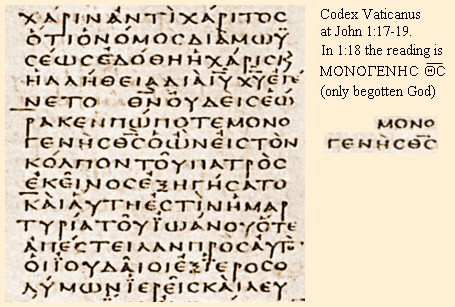




Comments
Post a Comment